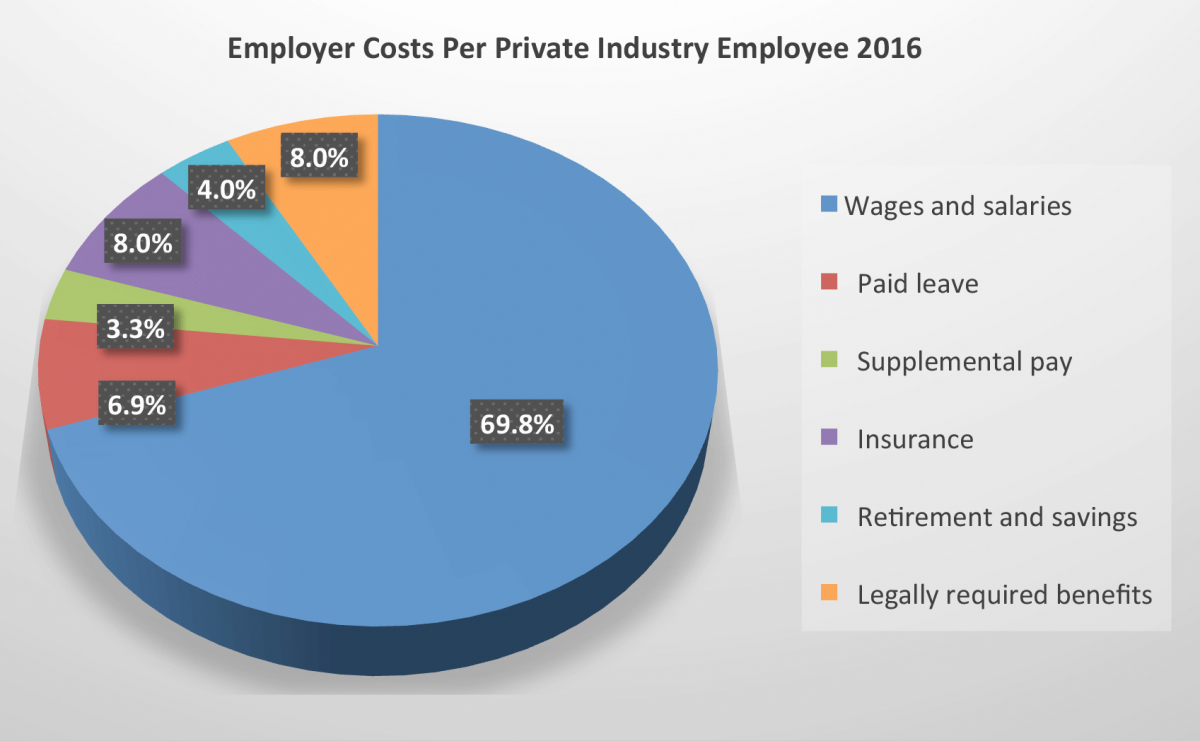Cost of Benefits per Employee: A Comprehensive Guide
In today’s competitive job market, offering attractive employee benefits is essential for businesses to attract and retain top talent. However, understanding the cost of providing these benefits is crucial for effective financial planning and budgeting. In this comprehensive guide, we will delve into the topic of the cost of benefits per employee, providing you with valuable insights and information.
Understanding the Importance of Calculating the Cost of Benefits
Calculating the cost of benefits per employee is vital for businesses to accurately estimate their overall compensation expenses. By understanding these costs, companies can make informed decisions about their benefit offerings, negotiate better rates with providers, and ensure they are allocating their resources effectively.
Factors Affecting the Cost of Benefits per Employee
Several factors contribute to the cost of benefits per employee. It is important to consider these factors when analyzing and estimating the expenses associated with providing employee benefits:
Healthcare Coverage: The cost of healthcare coverage, including medical, dental, and vision plans, can significantly impact the overall cost of benefits per employee. Factors such as plan type, coverage level, and the number of employees enrolled can influence these costs.
Retirement Plans: Contributions to retirement plans, such as 401(k) or pension plans, are another significant factor affecting the cost of benefits. The employer’s matching contributions, vesting schedules, and the number of employees participating in the plan all contribute to the overall expenses.
Paid Time Off (PTO): Providing paid time off benefits, such as vacation, sick leave, and holidays, is an essential part of employee compensation. Calculating the cost of PTO involves considering the average salary of employees and the number of days off granted.
Additional Benefits: Other benefits, such as life insurance, disability coverage, and wellness programs, should also be taken into account when estimating the cost of benefits per employee. These additional benefits contribute to the overall compensation package and impact the company’s expenses.
Methods for Calculating the Cost of Benefits per Employee
There are several methods businesses can use to calculate the cost of benefits per employee. The most common approaches include:
Total Cost Method: This method involves calculating the total cost of all benefits provided to employees and dividing it by the number of employees. It provides a straightforward average cost per employee.
Per Benefit Method: With this method, the cost of each benefit is calculated individually, and the total cost is determined by summing up the costs of all benefits provided.
Per Employee Method: This method involves calculating the cost of each benefit per employee and then summing up the costs to determine the total cost per employee.

Calculating the cost of benefits per employee is a crucial step in understanding the financial impact of providing employee benefits. By considering factors such as healthcare coverage, retirement plans, paid time off, and additional benefits, businesses can accurately estimate their compensation expenses. Utilizing appropriate calculation methods allows companies to make informed decisions and allocate their resources effectively. Remember, understanding the cost of benefits per employee is not only essential for financial planning but also for attracting and retaining top talent in today’s competitive job market.
Frequently Asked Questions
1. What is the cost of benefits per employee?
The cost of benefits per employee refers to the total expenses incurred by a company to provide benefits such as health insurance, retirement plans, paid time off, etc., for each employee.
2. How is the cost of benefits per employee calculated?
The cost of benefits per employee is calculated by summing up all the costs associated with providing benefits and dividing it by the total number of employees in the company.
3. What factors contribute to the cost of benefits per employee?
Several factors contribute to the cost of benefits per employee, including the type of benefits offered, the number of employees enrolled, the location of the company, and the overall health and age demographics of the workforce.
4. Are the costs of benefits per employee fixed or variable?
The costs of benefits per employee can vary depending on factors such as changes in healthcare costs, employee utilization of benefits, and the addition or removal of certain benefits. Therefore, they can be considered as both fixed and variable costs.
5. How can a company reduce the cost of benefits per employee?
Companies can reduce the cost of benefits per employee by exploring different benefit options, negotiating better rates with insurance providers, implementing wellness programs to promote employee health, and encouraging employees to take advantage of preventive care.
6. Do all employees receive the same benefits?
No, not all employees receive the same benefits. The benefits offered to employees can vary based on factors such as their employment status (full-time, part-time), length of service, and job level within the organization.
7. Can employees choose not to enroll in certain benefits?
Yes, in most cases, employees have the option to decline certain benefits if they have alternative coverage or if they do not require them. However, some benefits may be mandatory depending on local laws or company policies.
8. How do changes in benefits affect the cost per employee?
Changes in benefits, such as adding or removing certain benefits, can impact the cost per employee. Adding new benefits or enhancing existing ones may increase the cost while removing benefits or reducing coverage can lower the cost per employee.
9. Are there any tax implications for the cost of benefits per employee?
Yes, there can be tax implications for the cost of benefits per employee. Some benefits, such as health insurance premiums, are typically tax-deductible for employers, while others may be taxable for employees.
10. How often should a company review the cost of benefits per employee?
A company should regularly review the cost of benefits per employee to ensure it remains competitive and aligned with its financial goals. Annual or biennial reviews are common, but the frequency may vary depending on the company’s size and industry.




